
I'm back with another post in a series, which is dedicated to how to naturally control pests in our crops. If you remember, I made two posts dedicated to my trillolit plant (Combretun indicum) and the plague that is currently affecting it, to the point of not producing flowers, which is the first time that has happened during its 80 years of existence (I asked to my mom about it). Then you can read the post that talks about the plant, as well as the one about the pest that is damaging it, the cottony mealybug, and the other posts related to the other pests and my attempts to control them:
Cochinilla Algodonosa (Planoccocus citri) / Cottony Mealybug (Planoccocus citri) [ESP/ENGL]
Piojo Blanco (Pinnaspis aspidistraes) / White Louse (Pinnaspis aspidistraes) [ESP/ENGL]
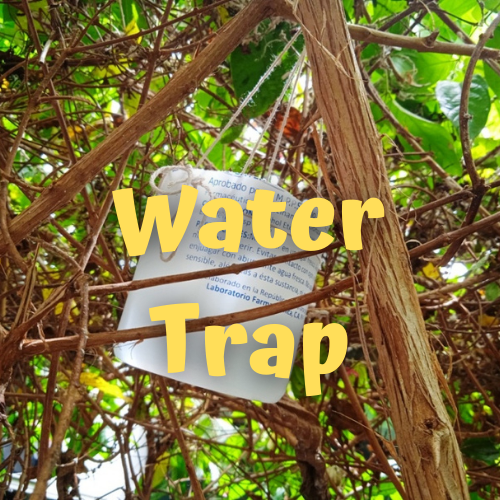

To be honest, never in my life have I seen a plague as harmful as the cottony mealybug, never before have I seen something so invasive, so damaging and resistant, (the white louse is almost as resistant as her, I think they go together). At home we have applied various sprays with different solutions to the trillolit: Water with vinegar, water with bicarbonate of soda, water with soap, the natural insecticide that I made and share the post above, oil mixed with soap and water, etc.; and at the time of taking those pictures, which was at the end of March 2022, the population of these critters was not decreasing, so I tried to take an additional measure and that was to create a vinegar water trap and observe its result for a period of three days.
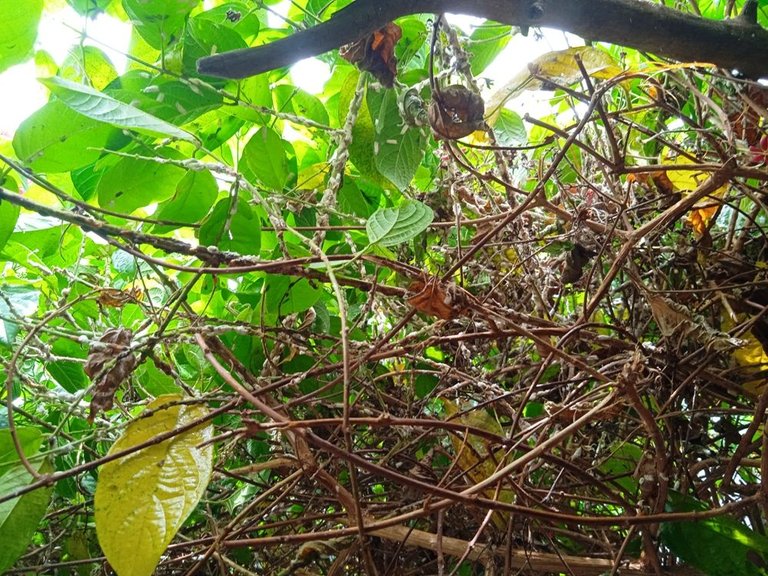
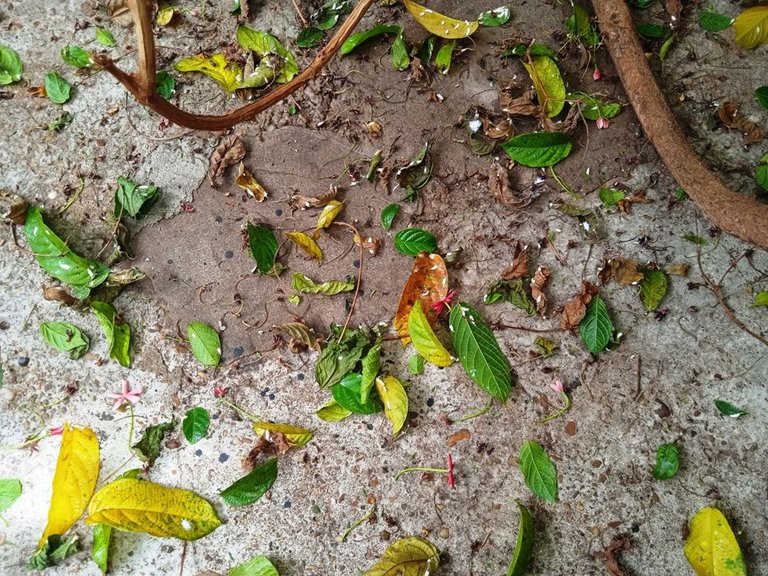

- Una botella plástica.
- Un cuchillo aserrado.
- Tijeras.
- Hilo o cordel.
- Un rotulador.
- Un perforador.
- Agua limpia.
- Vinagre blanco, el cual utilizo porque su aroma atrae a ciertos insectos, y al entrar en contacto con el exoesqueleto de éstos, lo disuelve, y los mata.
I have previously made similar traps on my backyard, and in the rainy season I will use them there too. I put them there to control the population of phorid flies (Phoridae), which parasitize bee hives, especially meliponas; that is why I usually place these contraptions in the trees to capture them and reduce their incidence in the honeycombs. The materials and tools that I use in its elaboration are the following:
- A plastic bottle.
- A serrated knife.
- Thread or string.
- A marker.
- Pair of scissors
- A driller.
- Clean water.
- White vinegar, which I use because its aroma attracts certain insects, and when it comes into contact with their exoskeleton, it dissolves it and kills them.
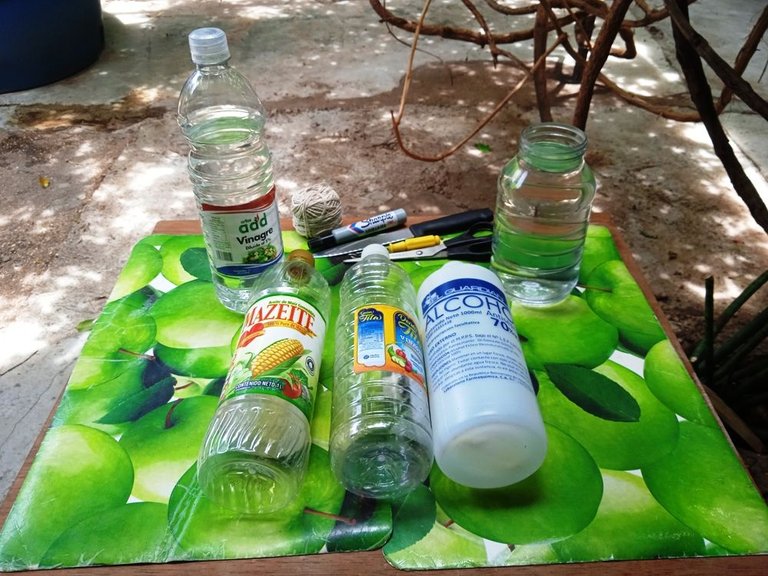
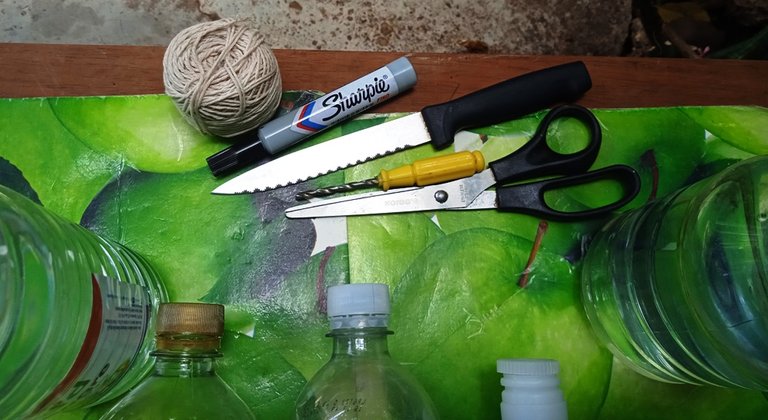
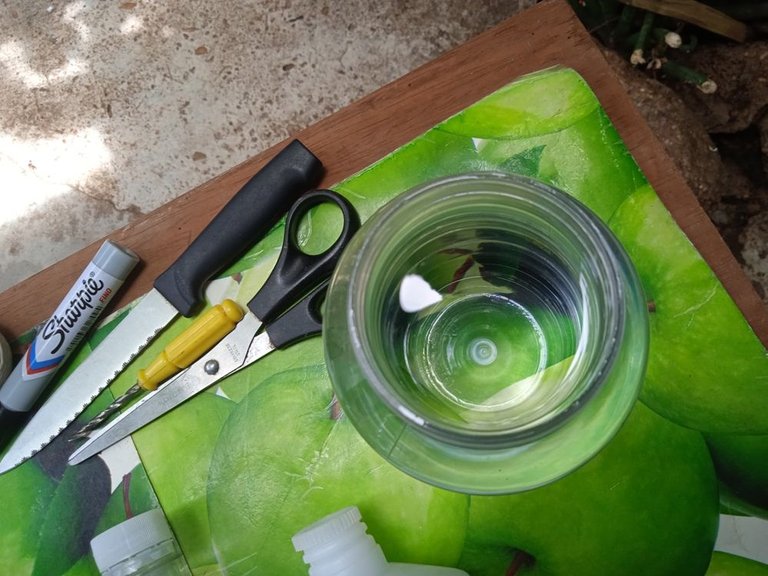

PROCEDIMIENTO / PROCEDURE
We take the bottle and label it by making a line in the center
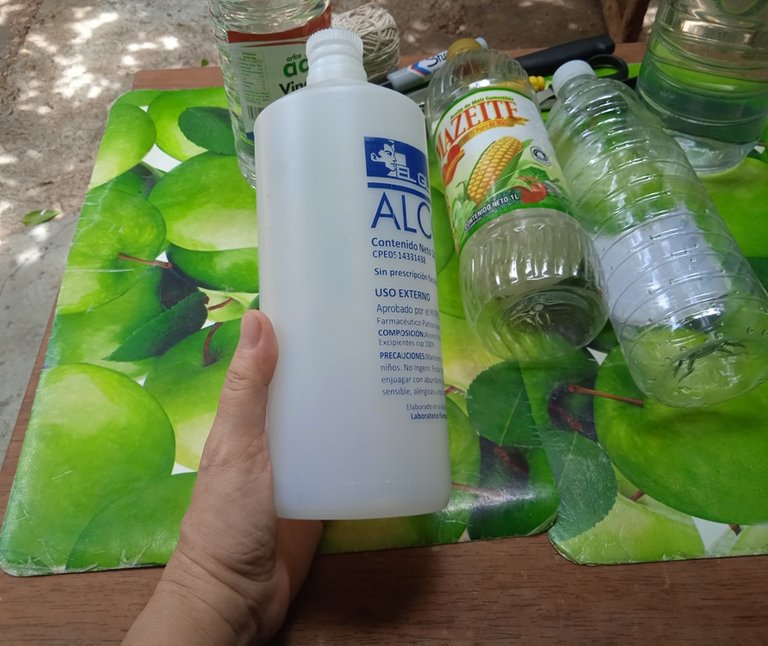
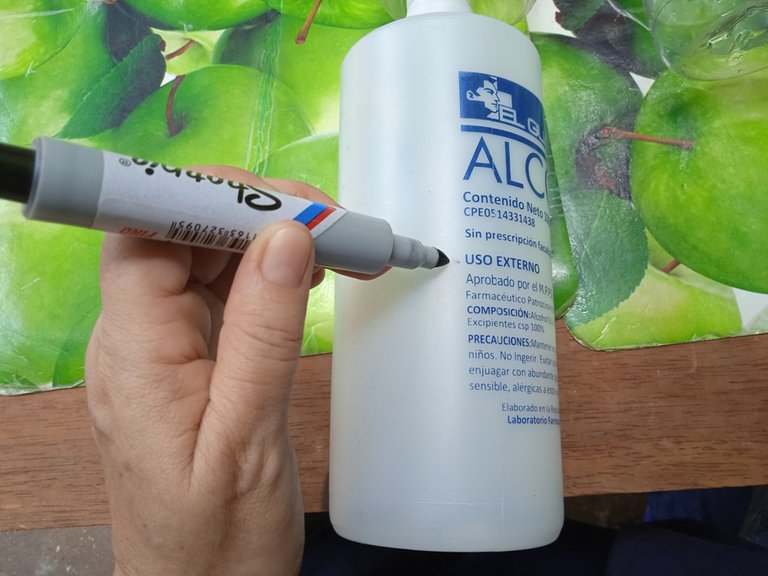
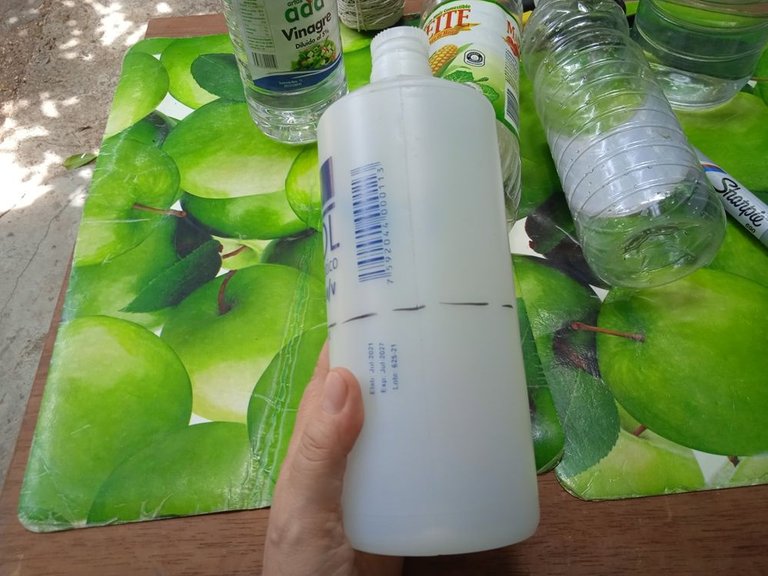

We cut the bottle in half
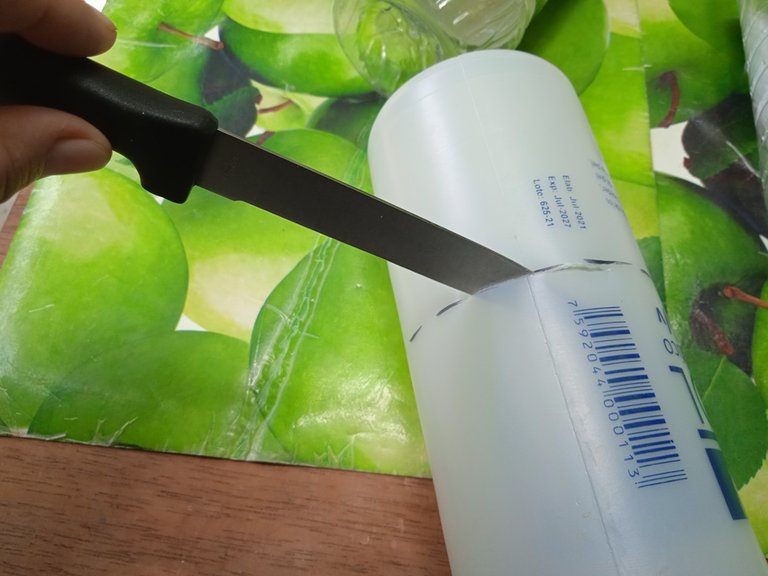
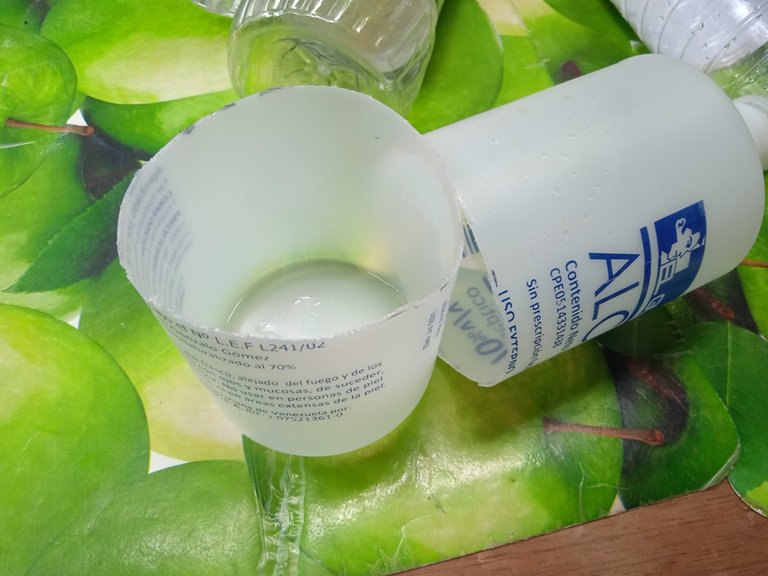

We mark four equidistant points, near the upper edge of the piece of bottle that we will use, and we drill the holes there
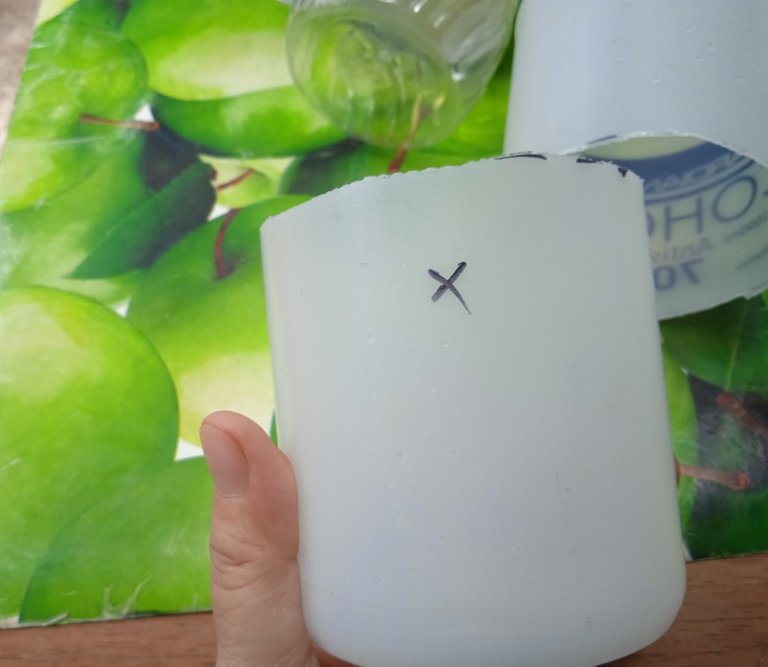

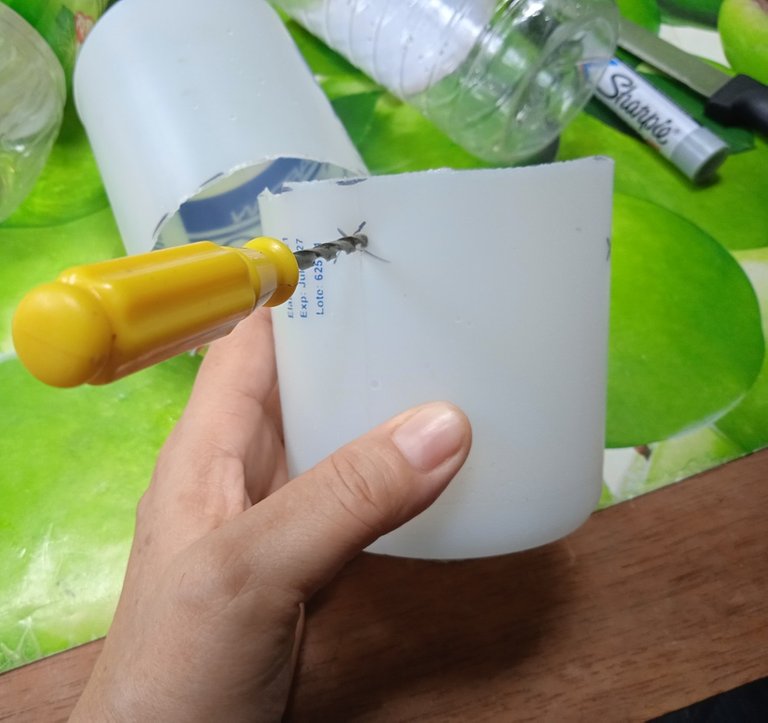
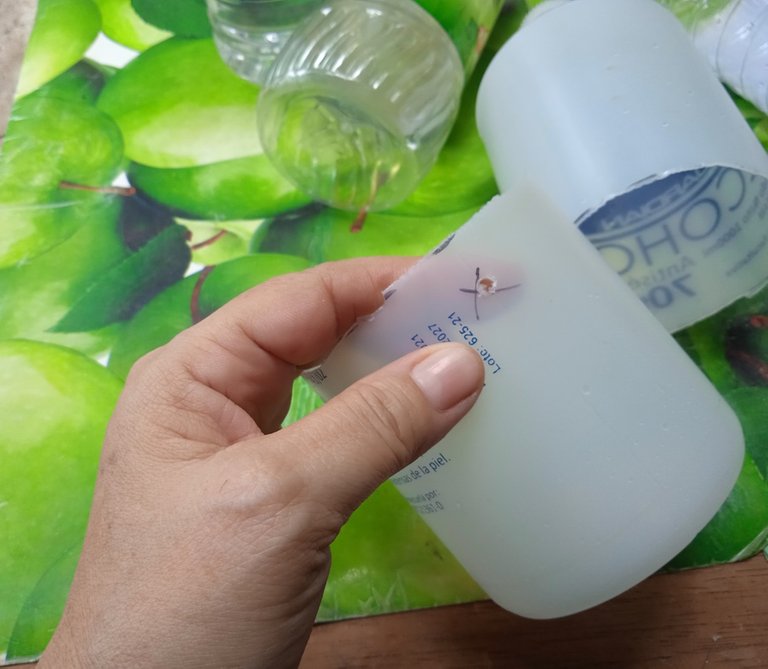

Insert the string through the holes, until forming two or more handles, which give stability to the container
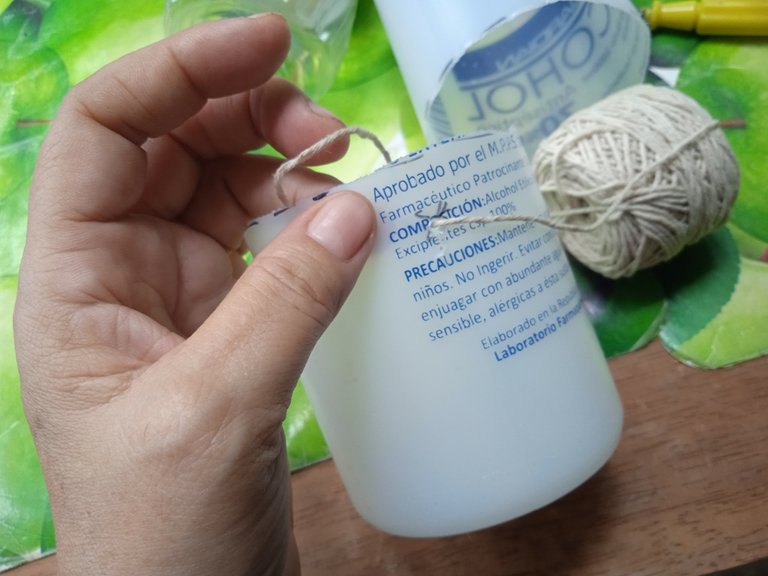
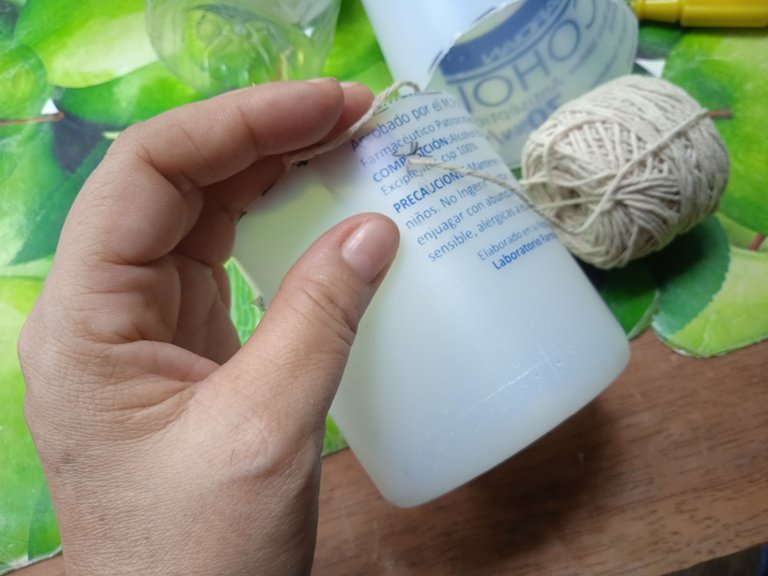
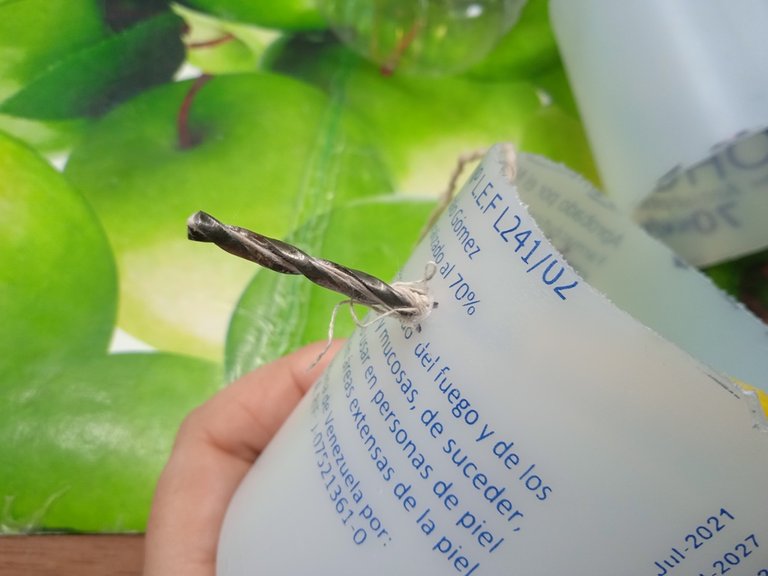
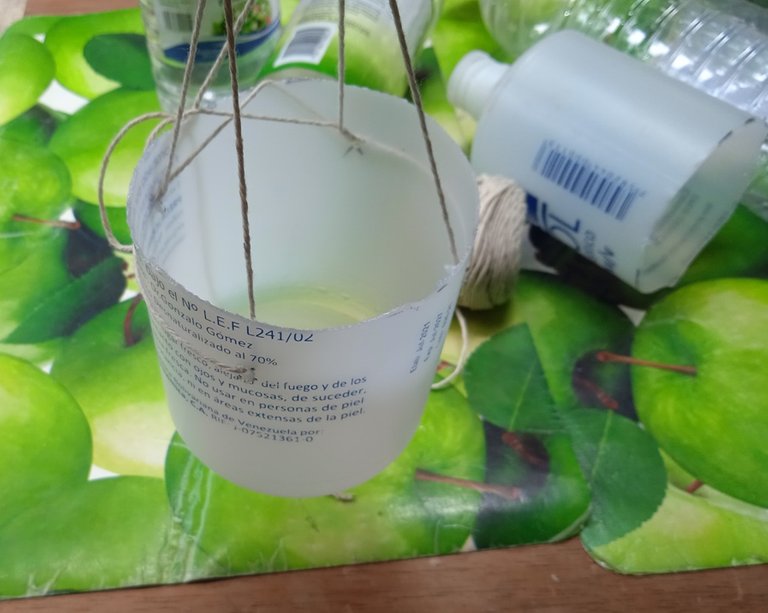

Add water and white vinegar in equal parts
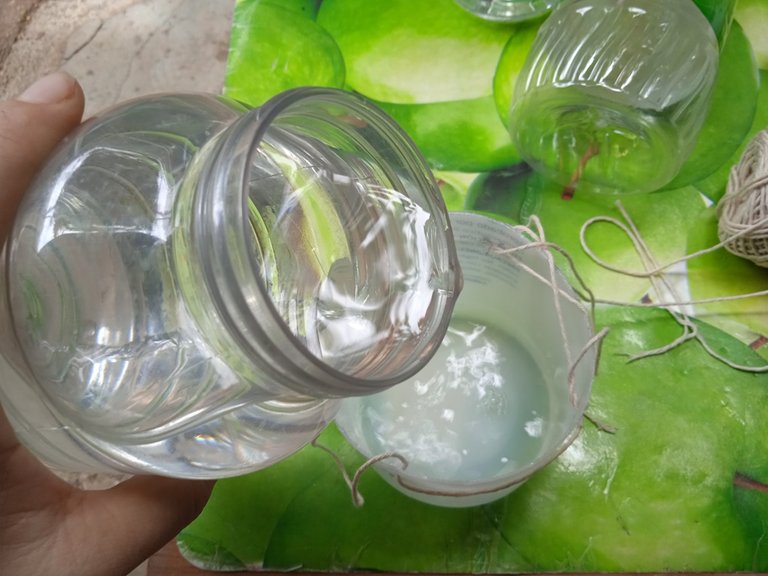

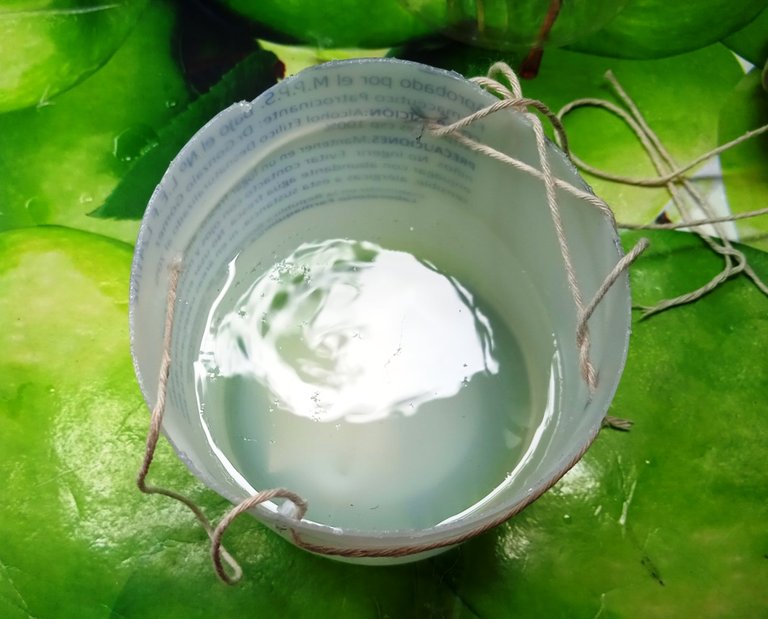

Place the water trap in a place where there is pest traffic, it is assumed that the smell of vinegar will attract them and they will fall inside the trap, drowning or disintegrating
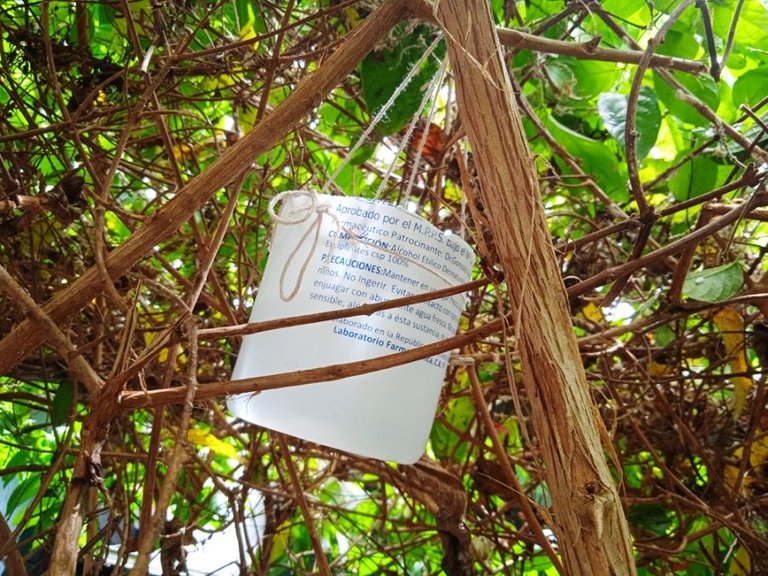
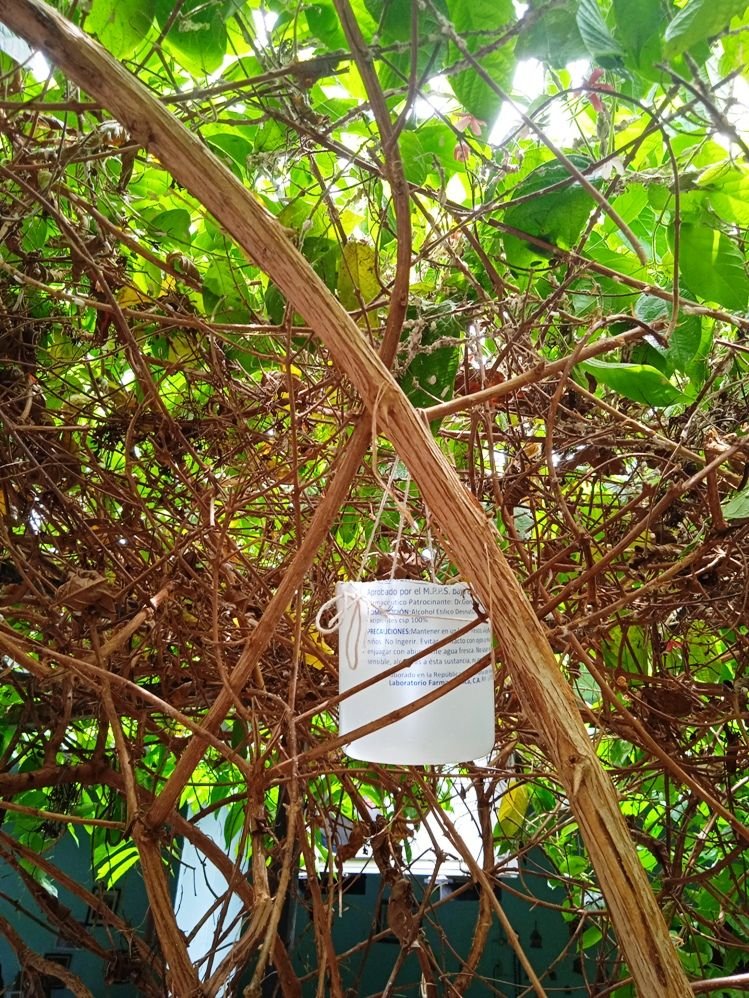

CONCLUSION: The result I got with this trap was null. It did not collect any cottony mealybugs inside it, I suppose that these insects are not attracted to the smell of vinegar, so it is a harmless trap against this pest, although it is effective against other insects, for example, phorid flies (Phoridae), which is why I recommend its use in cases of avoiding melipona hives parasitism, and if you want to check its effectiveness against other insects, first do a preliminary test in situ.


Todas las fotos de este post son de mi autoría y fueron tomadas con mi teléfono Xiomi REDMI 8 A // These photos are my own, and were taken with a Xiomi REDMI 8 A phone
Los divisores son cortesía de @eve66 quien comparte bellos diseños que embellecen el maquetado de nuestras publicaciones. // The dividers used are courtesy of @eve66 who shares beautiful designs that embellish the layout of our post.
En caso de que se requiera utilizar el contenido o las imágenes de este post y de mis otras publicaciones, agradecería que se hiciera referencia a mi autoría (Fabiola Martínez) y se citara el enlace correspondiente. Gracias. // In case it is required to use the content or images of this post and of my other publications, I would appreciate if you could refer to my authorship (Fabiola Martínez) and cite the corresponding link. Thanks.

 You've been curated by @plantpoweronhive! Powered by LOTUS token, an alternative health social currency on HIVE. Delegations welcome!
You've been curated by @plantpoweronhive! Powered by LOTUS token, an alternative health social currency on HIVE. Delegations welcome!

We have something similar, but they are usually on the roots of plants instead, so I've no idea how they can be treated.
Those are root mealybugs, I think backyard musaceae have too. I will investigate what treatments can be applied to them and I will inform you.
Look this @minismallholding https://peakd.com/hive-140635/@sirenahippie/espengl-mariquitas-vs-cochinilla-algodonosa
I guess this will be helpful in our garden.. My father should know this method 😁
Hi @jane1289, thanks for stopping by to visit my blog. This water trap method, can be effective for certain pests, but not all. This other method is 100% effective https://peakd.com/hive-140635/@sirenahippie/espengl-mariquitas-vs-cochinilla-algodonosa
Thank you..I'll visit that too
The rewards earned on this comment will go directly to the person sharing the post on Twitter as long as they are registered with @poshtoken. Sign up at https://hiveposh.com.
Really interesting! =)
Yes, it's. Thanks for your comment.
I will try this for the phorid flies. Thank you for sharing.
Hi @sisterhood2! Thanks for your comment. Look, this water trap is effective for phorid flies, they love the aroma of vinegar, do not bring it too close to the melipona hives, leave them aside, even down, on the trunk of the trees, away from the flowers, so that the bees don't fall inside. Greetings!
Hola Sirena, creeme que también he luchado contra esa cochinilla y aún no encuentro un fungicida efectivo, terminó acabando con alguna de mis plantas lamentablemente. Escuché que la hoja de neem puede servir pero en realidad no he intentado usarla. Saludos!
Hola, pues sabrás que el trillolit tiene 2 semanas en recuperación, y todo gracias a unos coquitos pequeñitos, unas mariquitas, pero no de las rojas con negro, sino grises con lunares negros, han ido exterminando progresivamente a esas pestes que estaban en mi planta. Voy a ver si las llevo hasta el limonero para que hagan lo propio con los piojos blancos. Creo que es la única alternativa, esos otros insectos. Creo que hoy o mañana haré un post hablando de ellos. Gracias por pasar a comentar y leer mi post. Saludos.
La naturaleza es sabia. Ojalá puedas recuperarlas. Saludos!
Está recuperándose @alborhada mira este otro post https://peakd.com/hive-140635/@sirenahippie/espengl-mariquitas-vs-cochinilla-algodonosa